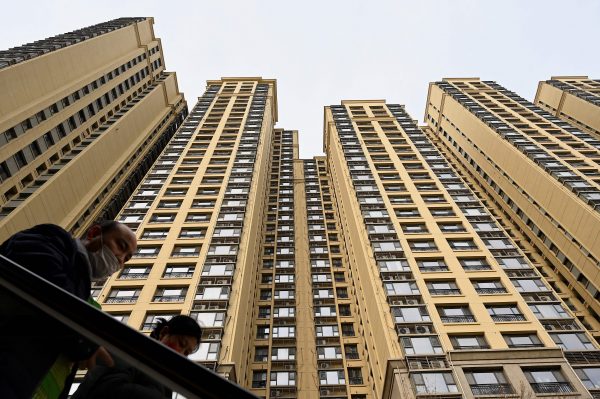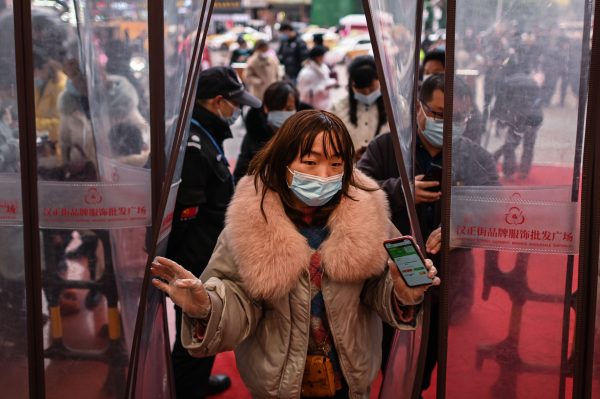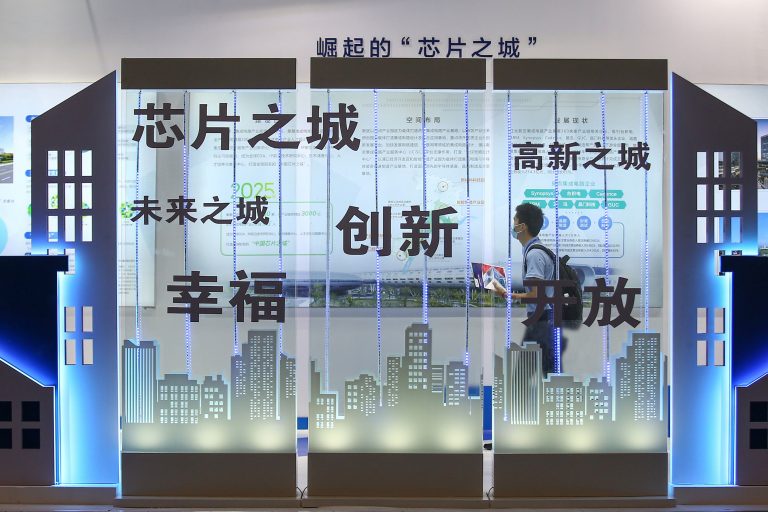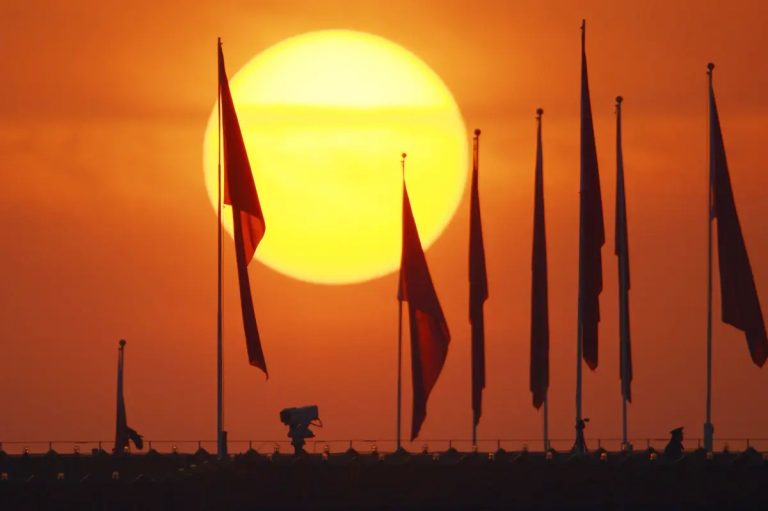A major factor — among many others — is China Evergrande’s debt crisis and mounting debt problems for the real estate sector on the whole.
China’s National Bureau of Statistics (NBS) announced on Jan. 17 that the economy grew at 8.1 percent from a year ago in 2021. On paper, the figure seemed impressive, beating the 8 percent forecast and the government’s target of above 6 percent. China’s GDP in 2021 also grew at the fastest pace since 2011.
A breakdown of the data, however, shows that China’s economy is deteriorating and headed for more trouble this year. Fourth-quarter growth in 2021 was just 4 percent, with quarter-on-quarter data (Q1: 18.3 percent; Q2: 7.9 percent; Q3: 4.9 percent) reflecting clear deceleration. Investments and consumption, two of China’s “troika” of growth drivers, also showed weakness.
Investments
China’s investment in fixed assets (excluding rural households) grew 4.9 percent over the January-December period to reach 54.455 trillion yuan. However, the growth in investments declined markedly throughout the year, from a 35 percent increase during the January-February period to below 10 percent from August onwards.
RELATED:
Success
You are now signed up for our newsletter
Success
Check your email to complete sign up
China Shows Signs of Fiscal and Food Shortages Amid Slowing Economic Growth

A major factor behind the contraction in investments is China Evergrande’s debt crisis and mounting debt problems for the real estate sector on the whole. Real estate investments only grew 4.4 percent for the whole year as compared to the 38.3 percent increase during the January-February period. Sales of commercial housing also rose by just 4.8 percent for the whole year, down from the 133.4 percent growth at the beginning of 2021.
Investments are on a downward trajectory in China, and look set for further declines in 2022 as financial contagion spreads with the worsening real estate sector debt crisis and declining property sales. This has led to fewer land purchases and shrinking local government revenue, which in turn forced the latter to slash civil servant salaries, bonuses, and other perks. Barring an unlikely change of circumstances, this vicious cycle will continue, with dire consequences.
China’s deteriorating economy and regulatory crackdowns could also affect external investments. In August 2021, Japanese conglomerate SoftBank announced that it was pausing investments in China in the wake of regulatory action; Beijing had targeted Chinese tech giants like Didi Chuxing and Ant Group, as well as private tuition and the video game industry. In November, SoftBank reported net assets losses of about $54 billion over three months due to regulatory crackdowns in China.
Consumption
NBS data showed that retail sales grew 12.5 percent from a year ago in 2021 to 44.082 trillion yuan. As with the case with investments, however, retail sales growth plunged throughout the year, from over 30 percent at the start of the year to single digits in July, below 5 percent in August, and down to 1.7 percent in December.
Several factors account for the steady drop in consumption figures. Most notably, the Xi Jinping leadership’s “zero-COVID” policy is making it hard for businesses to stay open. About 4.37 million micro and small businesses on the mainland shut down permanently in the first 11 months of 2021, or more than three times the number of newly registered businesses over the same period; private businesses account for three-fifths of output and four-fifths of urban employment in China. Shuttered or suspended businesses affect employment and wages, which in turn impact the Chinese people’s ability to consume.
READ MORE:
7 Ways China Is Destroying Its Own Economy
Gambling Mogul Alvin Chau May Have Been Done In by Political Connections to Xi’s Rivals

Beijing’s “zero-COVID” policy also affected passenger traffic, another crucial component to consumption. The China Transportation Services Index (CTSI) stood at 85.3 points in December 2021, a year-on-year drop of 30.1 percent and a two-year average decrease of 28 percent. November saw the least passenger traffic for the year at 71.7 points, down 43.5 percent from a year earlier.
Consumption was impacted by rapidly rising inflation. Officially, China’s consumer price index grew by 0.9 percent in 2021, with pork prices being the main culprit (-30.3 percent). However, Chinese citizens have been complaining of inflation all year long on social media, with varying severity depending on the location. Meanwhile, the difference between the nearly 10 percent difference between the consumer price index and the producer price index (10.3 percent) indicates that inflation is rising slower than manufacturing costs, a reflection of shrinking consumption power.
Other factors affecting consumption include the growing popularity of “laying flatism” among young people, regulatory crackdowns leading to layoffs, and a shrinking demographic. According to the latest NBS figures, there were only 10.62 million births in China in 2021, an 11.5 percent drop from 2020 and a record low of 7.52 births per thousand. With a national death rate of 7.18 per thousand, China’s population growth rate was only 0.34 per thousand, bleak numbers for a regime undertaking a desperate campaign to defuse the demographic time bomb.
Exports

The sole bright spot in China’s growth driver “troika” was exports. Exports grew by 21.2 percent in 2021 to reach 217.348 trillion yuan, while the trade surplus of 43.687 trillion yuan was the highest since 2015. The main reason for China’s strong export figures was the growing demand for manufactured goods in Western countries coupled with reduced global production capacity, particularly in countries like India and Vietnam, due to the coronavirus pandemic.
The CCP, however, did not benefit as much as it should have. Exchange rate fluctuations and differences (the renminbi appreciated by 2.62 percent in 2021), soaring energy and commodity prices, as well as freight rates, and port gridlocks impacted exports in 2021, with the situation set to worsen in 2022 as long as pandemic policies are in place. Moreover, small and medium-sized Chinese enterprises are becoming increasingly wary of accepting orders lest they suffer ever-increasing losses; many accept loss-making orders to avoid losing customers and retain future business channels.
‘Seven-fold challenges’
The CCP’s recent rhetoric betrays its serious concern about the Chinese economy and foreshadows tough times ahead.
Last December, state mouthpiece Xinhua mentioned the word “stability” 25 times in its report on the Central Economic Work Conference. The meeting stressed that economic work in 2022 should be “stable, steady, and progressive,” and all departments should assume responsibility for “macroeconomic stability.”
On Jan. 16, Central Political and Legal Affairs Commission secretary general Chen Yixin warned that external pressures were one of “seven-fold” challenges facing the regime this year. Chen described the global inflationary environment as a “major external pressure,” political security risks as “major hidden dangers,” and economic and financial risks as “major risks with spillovers.”
Larry Ong is a senior analyst with New York-based political risk consultancy SinoInsider. He was part of the SinoInsider team that forecasted the 19th Party Congress and 2018 Two Sessions personnel reshuffles with a high degree of accuracy.













